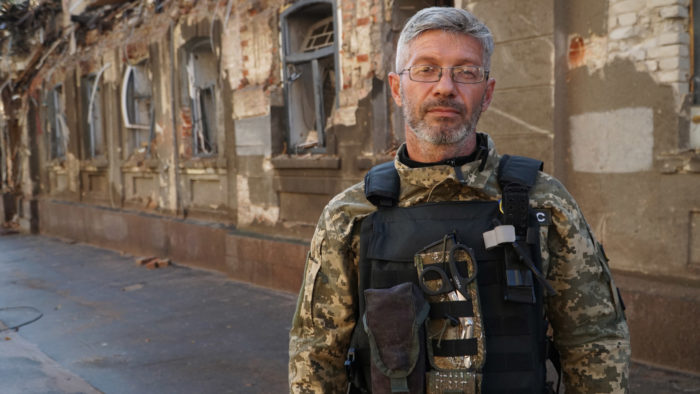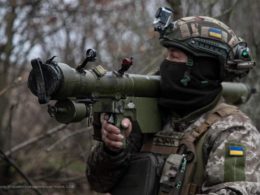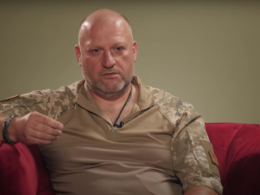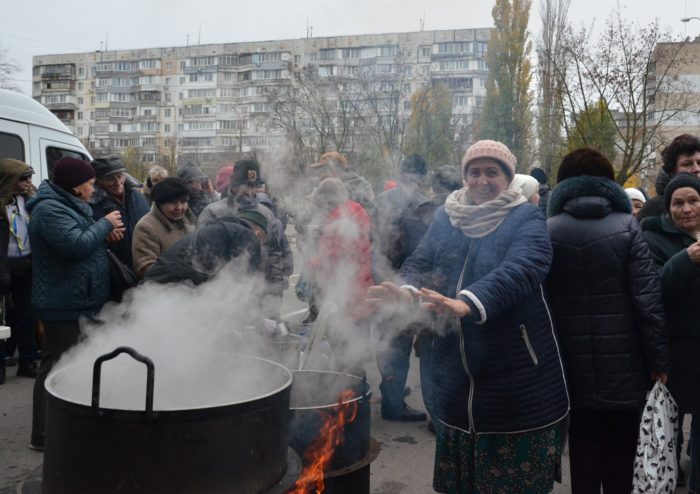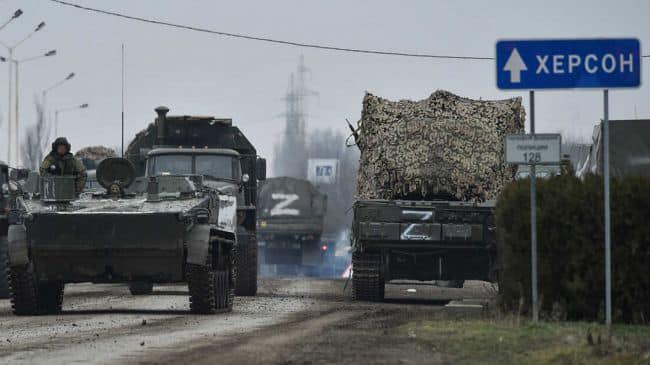As the Russian army moved forward, Ukrainian volunteers flocked from the neighbouring villages and gathered in Kherson to form a territorial defense unit. This is their story – the story of the unsung heroes of Buzkovy Park, a band of civilians and war veterans who took up arms to defend their homes and their city.
Kherson residents remember 1 March 2022 as one of the most tragic days in the history of their city. While conducting heavy shelling, Russian forces surrounded the city and reached the main highway, advancing to the village of Komyshany before establishing a checkpoint. Russian forces entered Kherson later in the day. Another invasion route led from Kherson Airport and Chornobaivka airfield along Naftovykiv Street and Buzkovy Park.
It was here, near Buzkovy Park, that the invaders were met by soldiers of the Territorial Defense Force. What happened next can be described as heroic and tragic at the same time. About 50 Kherson locals engaged in battle with the Russians, whose forces were significantly superior. The Ukrainians were armed with assault rifles and Molotov cocktails, the invaders – with armoured vehicles and tanks.
On 2 March, a shocking video revealed the scale of the tragedy in Buzkovy Park. Mutilated and headless bodies of dead Ukrainians lay scattered among the trees mowed down by fire from large-calibre weapons.
The Russians tried to conceal this bloody episode and erase it from the history of the war. But, in May, Kherson residents secretly placed a memorial plaque, flowers and testimonials honouring the memory of the fighters of the Kherson Territorial Defense Force who died defending their city on 1 March.
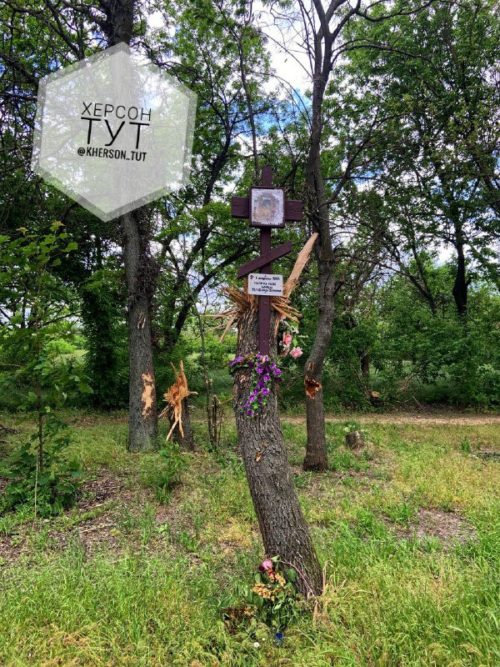
For a long time nothing was known about this battle. The video was removed from YouTube and the few survivors remained silent.
Stanislav Vasanov, call sign “Medic”, was a civilian fighter in the Kherson Territorial Defense Force and took part in the Battle of Kherson. Today, he serves as senior combat medic in the 192nd Kherson Battalion of the Territorial Defense Force (TDF). He believes that everyone should know more about this heroic, yet tragic episode of the ongoing Russian-Ukrainian war.
How war changes a man
Prior to the invasion, Stanislav Vasanov had never held a weapon in his hands. But, on 26 February, two days after the full-scale invasion, he decided to join the Territorial Defense Force.
For 25 years, Stanislav worked in construction, renovating and repairing old and new apartments. He lived a quiet, humdrum life in Posad-Pokrovsky, Bilozersky Raion , Kherson Oblast. He admits that he was getting a bit bored with his job and dreamed of finding something more interesting.
The invasion forced him to do just that. He became a soldier, and later a medic in the Armed Forces of Ukraine. On 25 February, he went to the recruitment office in the village of Bilozerka.
On the way to Kherson
Stanislav and other volunteers arrived at the Bilozersky Recruitment Office on 25 February. They were told to go home because there were no weapons or uniforms. The next day, the volunteers headed for Bilozerka.
“I’d say it was pretty chaotic. Nothing was organized; no one knew what to do. About 30-40 of us gathered, and more guys arrived during the day. Then some buses arrived and we all got in. Nobody knew where we were going. Our bus went to Kherson, to the headquarters of the Territorial Defense Force. That’s how I joined the 194th Bilozersky Battalion of the Territorial Defense Force of Ukraine.” recalls Stanislav.
Territorial Defense Forces left to cope alone in Kherson
The volunteers holed up in a boarding school in the central part of the city – about 500-600 men from the Bilozersky Battalion and from other battalions.
Stanislav states that at that time there were no Ukrainian soldiers in Kherson except for the TDF volunteers. Other Kherson TDF fighters testify that separate groups of the 59th Motorized Infantry and 80th Air Assault Brigades, who had fought in near Antonivsky Bridge, joined the TDF units in Kherson.
“I don’t know why we stayed in the boarding school until March 1. We were all in one place, and the Russians could’ve easily struck our territory with missiles. Perhaps they wanted to capture the city without too much destruction…
Our unit commander repeatedly asked Brigade Commander Dmytro Ishchenko to evacuate the civilians, make a battle plan or let us take up other strategic positions. The city was not at all prepared for resistance. In four days we could have arranged some positions, put up some hedgehogs. The city authorities did nothing in this regard.”
The battle of Buzkovy Park in Kherson
In the morning of 1 March, the brigade commander ordered the TDF units to proceed to another position. The bus carried about 43 men to Buzkovy Park. Almost all of them were from the villages of Bilozersky Raion – ordinary Ukrainian civilians. There were a few ATO veterans, but most of the men had no military experience.
The battle itself lasted no more than 20-30 minutes…
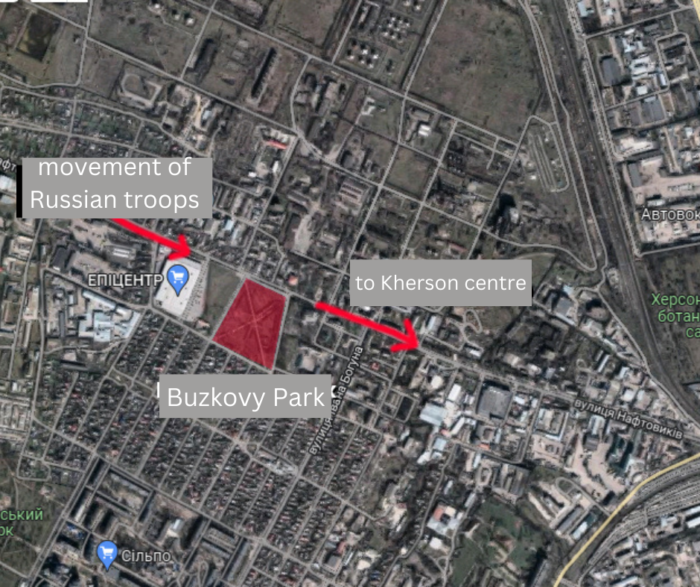
Apparently, the Russians were waiting for them. The first to arrive was an enemy APC followed by two infantry fighting vehicles (IFV) and some tanks. The Ukrainians were also expecting to see a Russian a mortar crew and some infantrymen.
At first, there was a relative calm and then an enemy sniper began firing in their direction, followed by enemy KPV heavy machine guns and IFVs.
“We had two RPG-18 Mukha grenade launchers. One of them hit an IFV. It began smoking, but five minutes later it was operational again, and the cannon continued firing in all directions. Apparently, one of the enemy tanks was also firing, because 40cm-thick acacia trees nearby were totally demolished.”
Stanislav says that the enemy troops were hiding in the thick bushes of the park, so the Ukrainian soldiers were like sitting ducks, and many were killed at point blank range – from approximately 25metres. The Russians used mortars and AGS automatic grenade launchers.
The Ukrainians also had Molotov cocktails, which turned out to be quite useless. A Molotov cocktail can be thrown about 30 metres, and if you try very hard – 40 metres. But, the Russians were deployed much further, at a distance of 150-200 metres. Moreover, it was way too dangerous to stand up and expose oneself to enemy fire.
“For the Russians, this battle was like a shooting range. They had lots of heavy equipment and they used it freely. All we had were Kalashnikovs and about 20 F1 grenades, which were hard to use in that situation. The only things that saved us were the trees… and not even all of them. Many were shattered to pieces.”
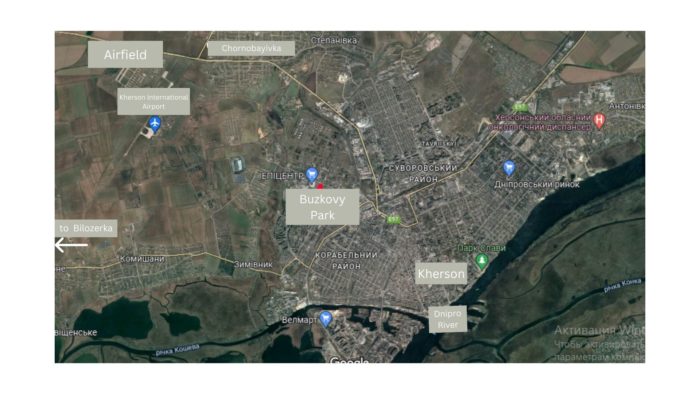
Stanislav’s group of 15 men was deployed a little further away from the Russians, next to the gate of the oil depot, so they did not lose so many men. He remembers that a man was lying dead next to him. Only later did he find out that this soldier was Oleh Shornyk, one of the first Ukrainians to die in this battle.
13 Ukrainian soldiers retreat to the Kherson oil depot
Aware that the battle was lost, the unit commander ordered his men to retreat to the oil depot. There were 13 men left.
“The commander then told us to bury our weapons, take off our uniforms, wait for darkness, leave the depot and the city, and head towards Bilozerka. We realized that we were under occupation. But, we received information that there were no Russians in Bilozerka yet.”
Stanislav was the third to leave. He hid on the territory of the depot. Two hours later, he heard a rustling noise and saw the unit commander coming towards him. They decided not to wait for the night, but to leave as quickly as possible in the daytime.
Russian military hardware arrived at the depot, and they began cleaning up the territory. Gunfire could be heard in different places; heavy weapons were being used.
Stanislav and the commander walked to Chornobayivka airfield, over four km away. By evening they were in Bilozerka, which is another seven km from the airport. Stanislav admits that he survived thanks to the unit commander and his knowledge of the terrain.
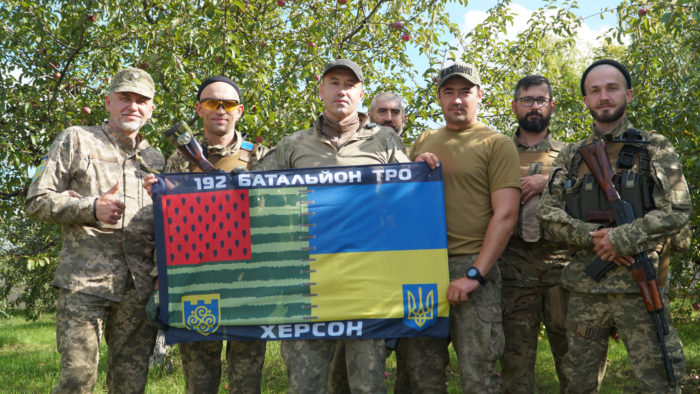
Russians sell the bodies of the dead
When Stanislav saw the video from the park, he recognized many of the victims. According to the locals, hungry prowling dogs had begun gnawing at the bodies.
Officially, 18 people died in the battle of Buzkovy Park. There were about 43 persons in Stanislav’s unit.
Stanislav believes that there were more casualties, but they are either unidentified or unreported. His platoon leader from the village of Stanislav in Kherson Oblast died there. The Russians sold the soldier’s body to his wife. They also tried to sell the bodies of other Ukrainian fighters to their families.
The Russians searched the bodies, took out the phones, and chatted with their relatives back home, says Stanislav.
One of Stanislav’s friends was wounded and remained in the park. He said that the Russians were walking around and killing the wounded. So, he crawled out of there, as he did not expect any medical aid from the Russian side. Some people picked him up and he eventually made it to safety.
Stanislav says that some of his friends may still be under occupation, so he cannot name anyone. He recently saw his unit commander on video. He was in captivity and was forced to take Russian citizenship on camera. The unit commander is from the village of Kysylivka in Kherson Oblast, which was occupied for a long time. His wife had a stroke, and was evacuated to somewhere in Vinnytsia Oblast.
“My unit commander told me that the dead are unlikely to receive compensation, because they burned all their documents before departure. These fallen soldier-volunteers aren’t listed anywhere. It’s a shame if their families don’t receive any compensation.”
Kherson is Ukraine!
When Stanislav arrived in Mykolaiv, he found some men from the 192nd Kherson Battalion. His 194th Bilozerka Battalion was, in fact, disbanded.
He decided to continue serving in the Ukrainian army, “because the war didn’t end in that battle”.
“The so-called annexation of Kherson Oblast by Russia didn’t change anything for me. This was the delusion of a madman. Kherson can never be Russia. Neither Kherson, nor Crimea, nor any other Ukrainian region can ever be Russia.”
Stanislav has a house in Kherson Oblast. It was destroyed, but he plans to return and rebuild it. His entire family is from that region, but the war forced them to seek shelter in safer regions. He himself is deployed somewhere in Kharkiv Oblast.
“I hope that after the liberation of Kherson, there will be much less pro-Russian sentiment thanks to such examples as the battle of Buzkovy Park. For me, that battle is a historical event. I’ll remember it for the rest of my life.”
Russian troops invaded Kherson Oblast from the south through Crimea on 24 February. By the evening, they had reached the city of Kherson and secured the Antonivsky Bridge, which ensures a strategic crossing over the Dnipro River and towards the important city of Mykolaiv.
By early morning of 25 February, Ukrainian forces recaptured the bridge in a fierce and costly battle. The counterattack forced the Russians to push north and capture the next closest crossing over the Dnipro River, the city of Nova Kakhovka. Russian troops once again seized Antonivsky Bridge later in the day.
On the morning of 27 February, the Russian Ministry of Defense stated that Russian forces had encircled Kherson and captured part of the city, including Kherson International Airport. On 2 March 2, Reuters reported that Russian Armed forces had captured the southern Ukrainian city of Kherson.
On 6 May 2022, Secretary of the United Russia General Council Andrei Turchak visited occupied Kherson and stated: “Russia is here forever. There should be no doubt about this. There will be no return to the past. We will live together, develop this rich region, rich in historical heritage, rich in the people who live here.”
According to Mykolaiv Oblast governor Vitaliy Kim, Russian forces began demolishing the bridges near Kherson in late May-early June in preparation for a future Ukrainian counterattack.
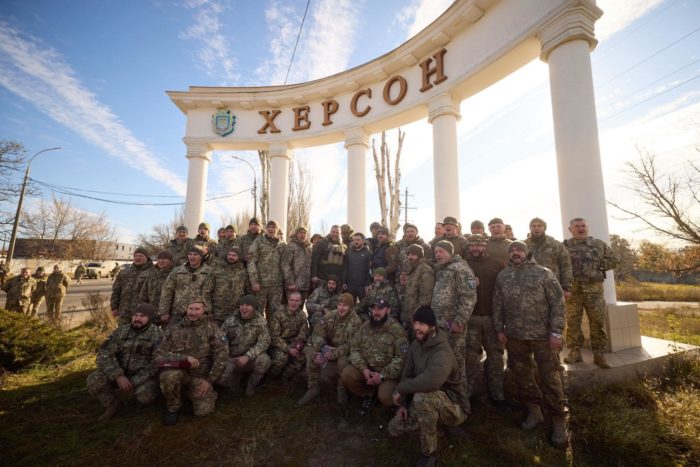
On 3 November 2022, nine months after the battle of Buzovsky Park, Russian forces removed their flag from the Kherson administrative building and advised the residents to leave the city and cross the river to the eastern bank. On 9 November 2022, Russian General Sergei Surovikin announced that Russian forces would abandon the city and move to the eastern bank.
On 11 November 2022, Ukrainian forces liberated Kherson.
“We couldn’t believe it!” Kherson residents on being freed from Russian occupation
Read more
- Ukrainian troops enter Kherson – media, Ukrainian intel
- Moscow TV is almost silent on Russian retreat from Kherson, so Russians turn elsewhere
- Kherson defeat could end Putin’s Victory cult as Crimean War defeat did Russia’s 19th-century one, Klishin Says
- Russian occupiers proudly steal raccoon & rest of animals from Kherson zoo

